How Do I... Choose a Kitchen Benchtop Material?
A kitchen expert reveals everything you need to know about choosing the perfect benchtop for your kitchen
Georgia Madden
21 September 2017
It’s probably the biggest decision you’ll make when it comes to a new kitchen – which benchtop will you choose? And with more than aesthetics riding on your decision – after all, what you select will also affect your kitchen’s performance and how much cleaning and maintenance you’ll be required to do – the pressure mounts. To help ease the process, we’ve asked kitchen expert Graeme Metcalf, industrial designer at Dan Kitchens Australia, for his insider tips on choosing the right style.
Where to start
The first step is to narrow down your choices to those materials that will best suit your needs. Consider…
Budget: A lower budget will narrow down your options, while a bigger one keeps it wide open.
Function: Ask yourself how you intend to use the kitchen, what type of cooking you do, how often you cook, and whether or not you’re a fastidious cleaner. This will help determine how durable the material needs to be. For example, if you are the type of person who hosts parties and cleans the next day, marble is not for you as it is porous and stains easily.
Slab size: Benchtop materials come in a multitude of sizes and thicknesses, some of which will suit your needs more than others. Say, for instance, you wanted an engineered-stone benchtop measuring 3.2 metres long x 1.5 metres wide in a single piece without any joins, your choice would be limited to oversized slabs.
Aesthetics: Once you have applied the previous three filters, you will have a much smaller pool of materials and manufacturers to choose from. Your last filter will simply come down to how much you like the look of a material.
The first step is to narrow down your choices to those materials that will best suit your needs. Consider…
Budget: A lower budget will narrow down your options, while a bigger one keeps it wide open.
Function: Ask yourself how you intend to use the kitchen, what type of cooking you do, how often you cook, and whether or not you’re a fastidious cleaner. This will help determine how durable the material needs to be. For example, if you are the type of person who hosts parties and cleans the next day, marble is not for you as it is porous and stains easily.
Slab size: Benchtop materials come in a multitude of sizes and thicknesses, some of which will suit your needs more than others. Say, for instance, you wanted an engineered-stone benchtop measuring 3.2 metres long x 1.5 metres wide in a single piece without any joins, your choice would be limited to oversized slabs.
Aesthetics: Once you have applied the previous three filters, you will have a much smaller pool of materials and manufacturers to choose from. Your last filter will simply come down to how much you like the look of a material.
What’s hot?
- Grey tones
- Natural stone, such as Carrara and Dolomite marbles, Superwhite natural stone, (which has pale grey veining), or the equivalent look in engineered stone
- Satin, matt or textured finishes
- Thin benchtop surfaces, juxtaposed with thicker surfaces in a different material, such as a slim 20 millimetre patterned or veined stone surface paired with a thicker section in natural timber, which is often raised or lowered to act as a bar or table
- Concrete and concrete-look engineered stones
Top-rated materials
Quartz-based, engineered stone: This material is durable, non-porous, and available in a huge range of colours and patterns (including ones that mimic natural stone fairly effectively). Unlike natural stone, engineered stone requires no ongoing maintenance, and has low to medium pricing. Be aware, however, that some of the stone look-alike finishes can be as expensive as the real thing.
Granite: We’re seeing a lot more granite enter the market. It can be just as beautiful as marble, but is far more resistant to staining, chipping and scratching. Prices range from low to high, according to looks and quality.
Quartz-based, engineered stone: This material is durable, non-porous, and available in a huge range of colours and patterns (including ones that mimic natural stone fairly effectively). Unlike natural stone, engineered stone requires no ongoing maintenance, and has low to medium pricing. Be aware, however, that some of the stone look-alike finishes can be as expensive as the real thing.
Granite: We’re seeing a lot more granite enter the market. It can be just as beautiful as marble, but is far more resistant to staining, chipping and scratching. Prices range from low to high, according to looks and quality.
Certain marbles: It’s hard to beat Calacatta Oro marble, with its pale grey veining, for sheer luxury and impact. However, it has a hefty price tag, plus as a surface it’s soft, porous and difficult to maintain. For a more affordable alternative, consider Carrara marble (which we love). For a more durable option, consider Dolomite marble. All marble types will need to be re-sealed regularly.
Corian: This acrylic-based, solid surface is super hygienic, stain-resistant and low-maintenance (no sealing required). It’s also very versatile: small pieces can be welded together to give you a seamless look from sink to benchtop, with no visible joins. No other materials can achieve this apart from concrete and stainless steel. It comes in a decent range of colours and patterns, although there’s not as much choice as you’d find in engineered stone. Mid to high pricing – expect to pay around the same price as you would for some of the more expensive engineered stones.
Corian: This acrylic-based, solid surface is super hygienic, stain-resistant and low-maintenance (no sealing required). It’s also very versatile: small pieces can be welded together to give you a seamless look from sink to benchtop, with no visible joins. No other materials can achieve this apart from concrete and stainless steel. It comes in a decent range of colours and patterns, although there’s not as much choice as you’d find in engineered stone. Mid to high pricing – expect to pay around the same price as you would for some of the more expensive engineered stones.
Other options
Porcelain: Materials such as Dekton and Neolith (which are also known as sintered compact surfaces) are fairly new to the kitchen market. They can be made to mimic natural materials, such as timber, concrete, marble and rusted steel, in a surface that is easy to clean, has a low porosity, and is UV-, stain- and scratch-resistant. Porcelain surfaces can be used indoors and out. On the downside, it is brittle and prone to cracking and chipping. High-end prices – it’s up there with granite and marble.
The 8 Biggest Kitchen Blunders
Porcelain: Materials such as Dekton and Neolith (which are also known as sintered compact surfaces) are fairly new to the kitchen market. They can be made to mimic natural materials, such as timber, concrete, marble and rusted steel, in a surface that is easy to clean, has a low porosity, and is UV-, stain- and scratch-resistant. Porcelain surfaces can be used indoors and out. On the downside, it is brittle and prone to cracking and chipping. High-end prices – it’s up there with granite and marble.
The 8 Biggest Kitchen Blunders
Concrete: A concrete benchtop will give your kitchen an industrial feel. It can be made in any shape and size, either fabricated in-situ or off-site. Concrete is not a material for those who want a pristine, durable, low-maintenance benchtop – it scratches easily, can chip at the corners (although this can be repaired), and will require resealing and re-polishing down the track. Stains will occur in those areas where the sealant has been removed.
The raw material is cheap, but the labour involved pushes costs to the upper end.
The raw material is cheap, but the labour involved pushes costs to the upper end.
What to consider when choosing colour and finish
Stain resistance: Natural stones can vary greatly in resistance based on colour. As a rule of thumb, the lighter the stone, the more porous and susceptible to staining it will be. There are exceptions to this rule, so it’s best to check with a stone mason.
UV resistance: This varies between materials and even colours from the same manufacturer. Some engineered stones and Corian colours, for example, are better UV-rated than others.
The other colours in the room: Consider how the benchtop colour will go with floors, walls, and joinery.
Neutrals are a safe bet: Neutrals in both cool and warm tones will suit most kitchens.
Stain resistance: Natural stones can vary greatly in resistance based on colour. As a rule of thumb, the lighter the stone, the more porous and susceptible to staining it will be. There are exceptions to this rule, so it’s best to check with a stone mason.
UV resistance: This varies between materials and even colours from the same manufacturer. Some engineered stones and Corian colours, for example, are better UV-rated than others.
The other colours in the room: Consider how the benchtop colour will go with floors, walls, and joinery.
Neutrals are a safe bet: Neutrals in both cool and warm tones will suit most kitchens.
A note on pricing
You can’t assess the price of a benchtop on the cost of the material alone. Things such as the finish you choose, installation charges, and any challenges you may face getting it to site (cranes are sometimes needed) can push the price up significantly.
You can’t assess the price of a benchtop on the cost of the material alone. Things such as the finish you choose, installation charges, and any challenges you may face getting it to site (cranes are sometimes needed) can push the price up significantly.
How to keep your benchtop looking its best
There is no silver-bullet solution for looking after your benchtop as they are all different. Wipe surfaces regularly and ask your kitchen or benchtop manufacturer how they’d recommend keeping it in top condition. Corian, for example, is fairly soft and can scratch, but it can be re-buffed by the manufacturer to bring it back to an as-new condition.
11 Kitchen Hardware Inclusions That Will Change Your Life
There is no silver-bullet solution for looking after your benchtop as they are all different. Wipe surfaces regularly and ask your kitchen or benchtop manufacturer how they’d recommend keeping it in top condition. Corian, for example, is fairly soft and can scratch, but it can be re-buffed by the manufacturer to bring it back to an as-new condition.
11 Kitchen Hardware Inclusions That Will Change Your Life
Tell us
What would you choose for your next kitchen benchtop? Tell us in the Comments below. And while you’re at it, don’t forget to like, share or bookmark this story. Join the conversation.
More
Read more kitchen stories
What would you choose for your next kitchen benchtop? Tell us in the Comments below. And while you’re at it, don’t forget to like, share or bookmark this story. Join the conversation.
More
Read more kitchen stories
Related Stories
Most Popular
Renovation Insight: How to Choose a Kitchen Designer
The right designer can bring your dream kitchen to life – three kitchen designers reveal where to look and what to ask
Full Story
Kitchen Expert Advice
7 Common Kitchen Design Challenges & How Experts Get Around Them
From bad layouts to poor storage, here are seven issues pros come up against (and overcome) in clients' kitchen renos
Full Story
Kitchens
A Good Fit: 10 Questions to Ask a Potential Kitchen Designer
By lwkkitchens
A good designer knows which questions to ask about your kitchen project. But what should you ask them before you sign?
Full Story
Most Popular
8 Dos and Don'ts for a Well-Functioning Butler's Pantry
Having a little help behind the scenes is key to a pristine kitchen – here's how to create a functional butler's pantry
Full Story
Most Popular
Key Measurements to Consider When Designing the Perfect Kitchen Island
By Anne Ellard
Discover the correctly proportioned kitchen island bench dimensions so your space works as well as it can
Full Story
Kitchen Renovations
10 Times You Should Hire a Kitchen Designer
These specialists can solve layout issues, save costs, update an older space and create custom design details
Full Story
Popular Houzz Series
How Practical Is... Handleless Joinery?
Handleless joinery is popular in modern homes. But how suitable are cupboards that can only be opened with a touch?
Full Story
Renovation Guides
Room by Room: Experts on Ways to Avoid Common Renovation Blunders
From the kitchen to the garden, and all areas in between, experts identify common mistakes and share priceless insights
Full Story
Most Popular
From Planning to Pendants: Kitchen Lighting Essentials
By Joanna Tovia
This valuable guide will give you all you need to know about choosing kitchen lighting for fabulous form and function
Full Story
Kitchen Renovations
A Kitchen That Uses Special Elements to Punch Above Its Weight
This couple wanted a well-designed kitchen that incorporated their pre-bought furniture; this designer delivered
Full Story

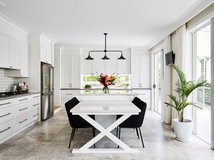
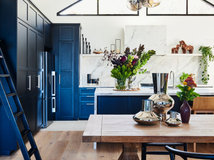

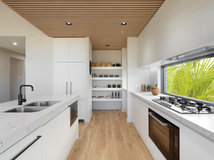


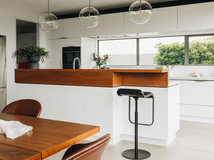

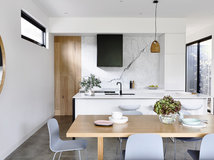

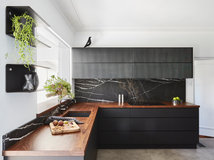



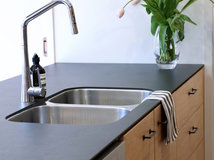
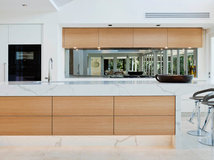



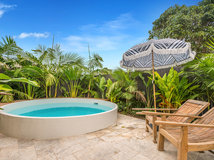
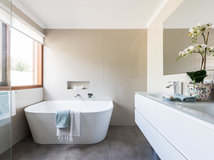
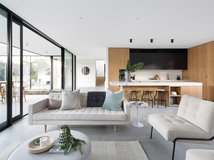

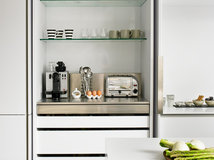

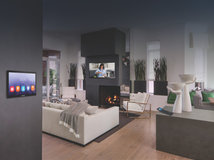

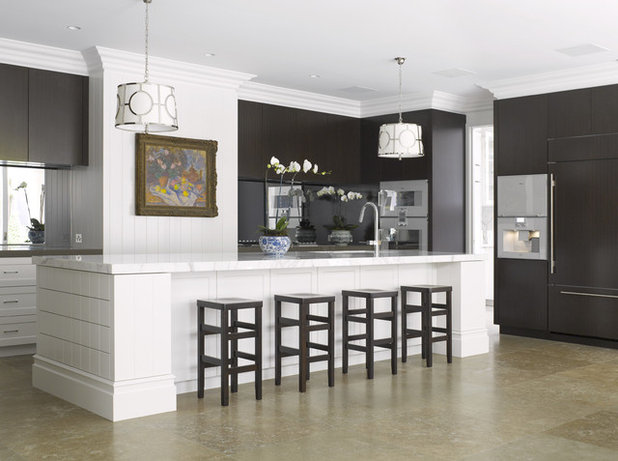
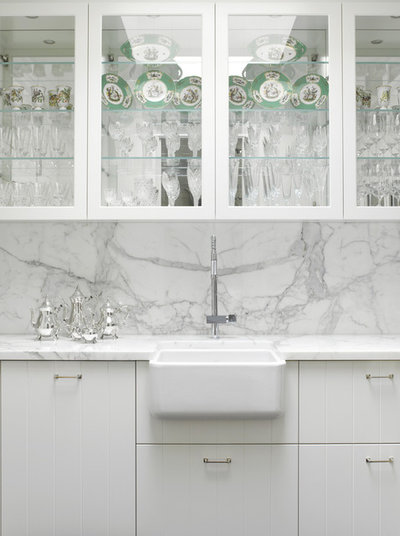
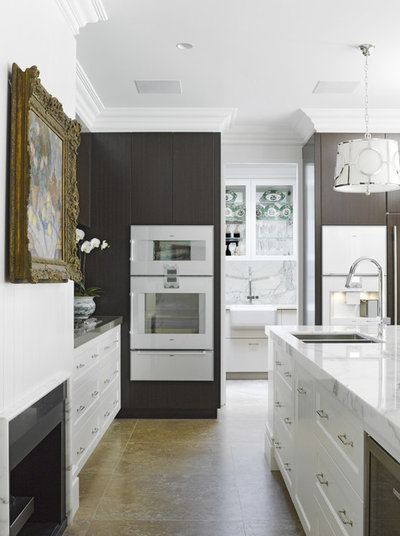
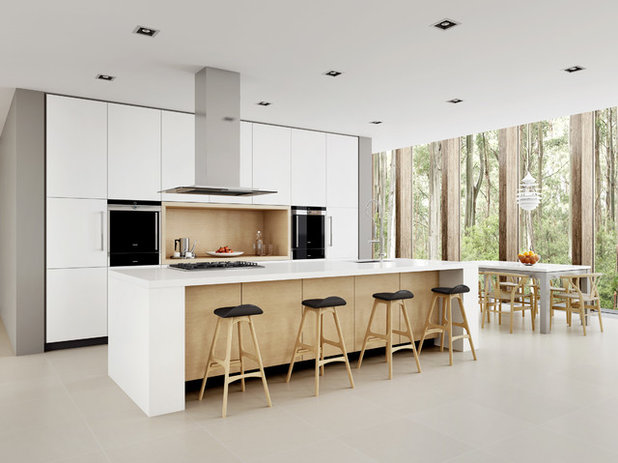
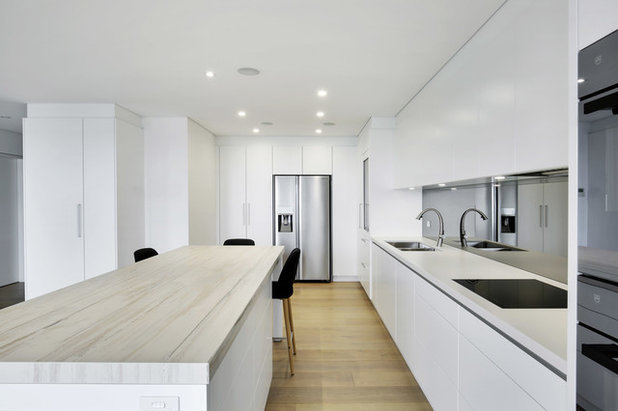
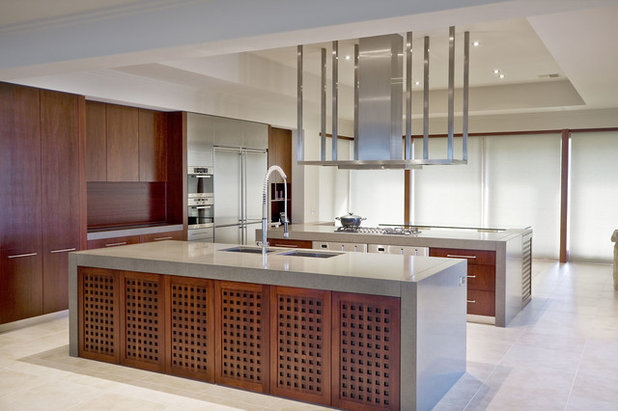
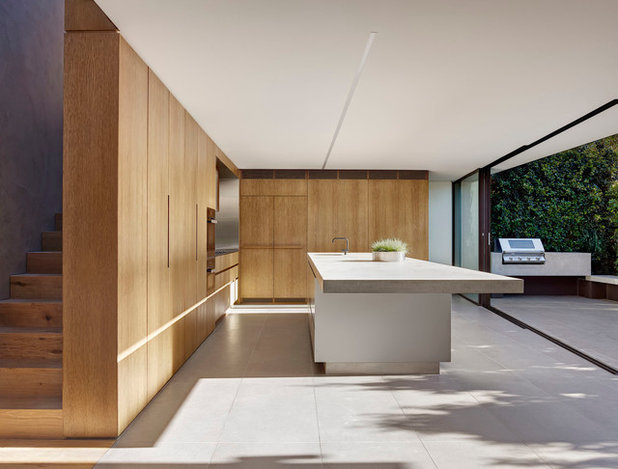
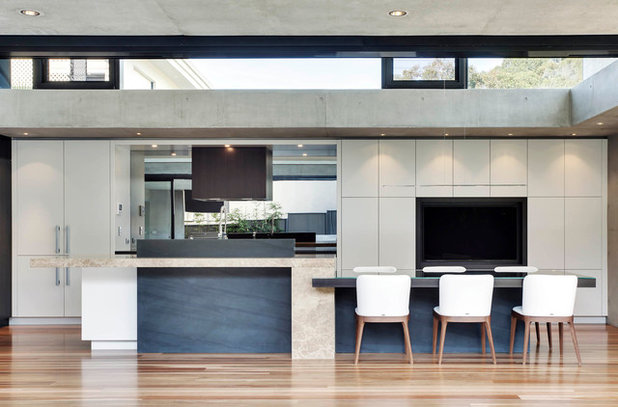
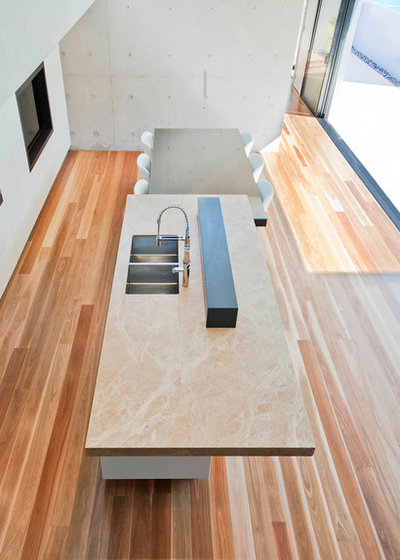
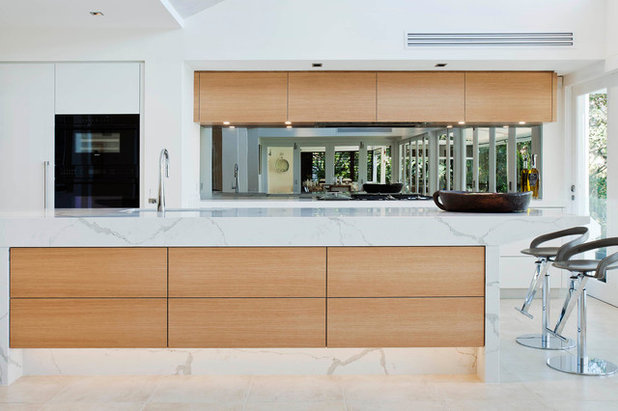
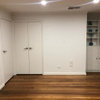
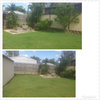
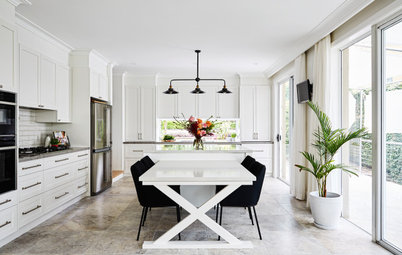
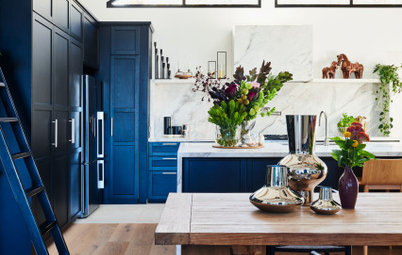
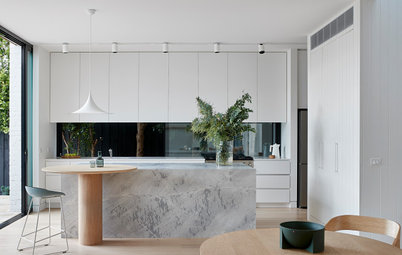
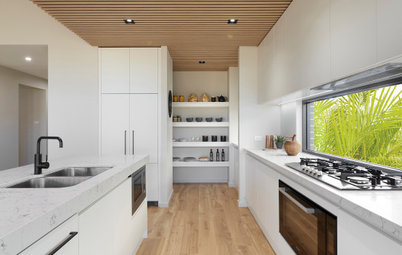
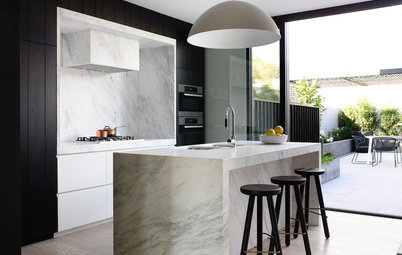
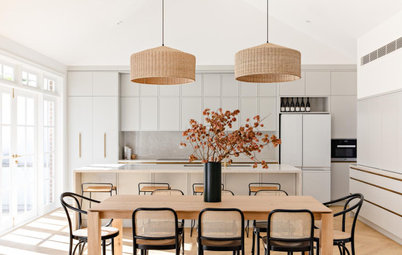
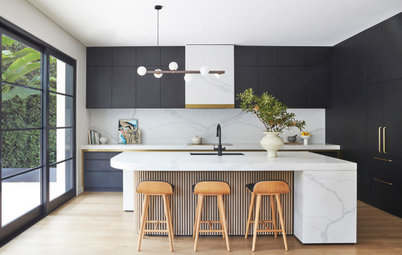
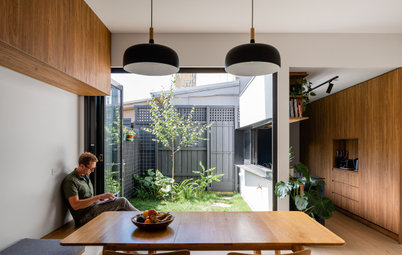
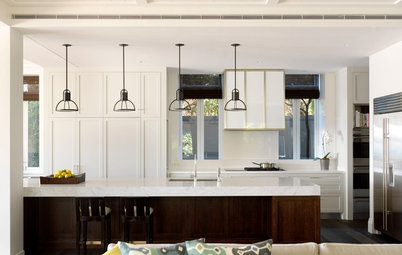
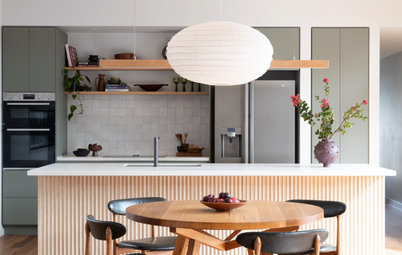
I have (and love, and would have again) stainless steel on the back bench with sink incorporated- tough, hygienic, easy care, no cracks gaps etc with a low, continuos “splash back” at the back, never had a warping issue with hot pots straight from oven etc.
Corian on the island- “soft”, warm, easy care. (Alternatives would be ok on the island too)
What about laminate type products???
Hi Nicole,
I've added Laminates and also solid timber in one of my comments above in this article.